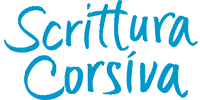When should you teach cursive handwriting?
Reading and writing indeed involve two different and complementary neuropsychological processes, although they may be considered two sides of the same coin. According to the Uta Frith model of reading and writing acquisition, currently the most renowned and accredited, these two processes develop together, triggering, supporting and integrating each other.
In the early phases of learning to read and write, children work their way through the process of segmenting words by sounding out single letters or digraphs (th, sh, ch, etc.). They need to see distinct, separate letters - Roman capital letters or unjoined lower case letters - which are clearly recognizable, so they can associate them with the sounds they represent.
They need to see distinct, separate letters - Roman capital letters or unjoined lower case letters - which are clearly recognizable, so they can associate them with the sounds they represent. Providing early reading instruction through global processing methods in a transparent phonetic language such as Italian, is currently being questioned, especially by the Italian Dyslexic Association AID (Associazione Italiana Dislessia).
Words written in cursive appear as single units where the internal elements are not easily discernable. Besides, cursive writing is useful only if children are able to read it, so it should not be introduced before children can at least read high frequency words correctly and quickly.





